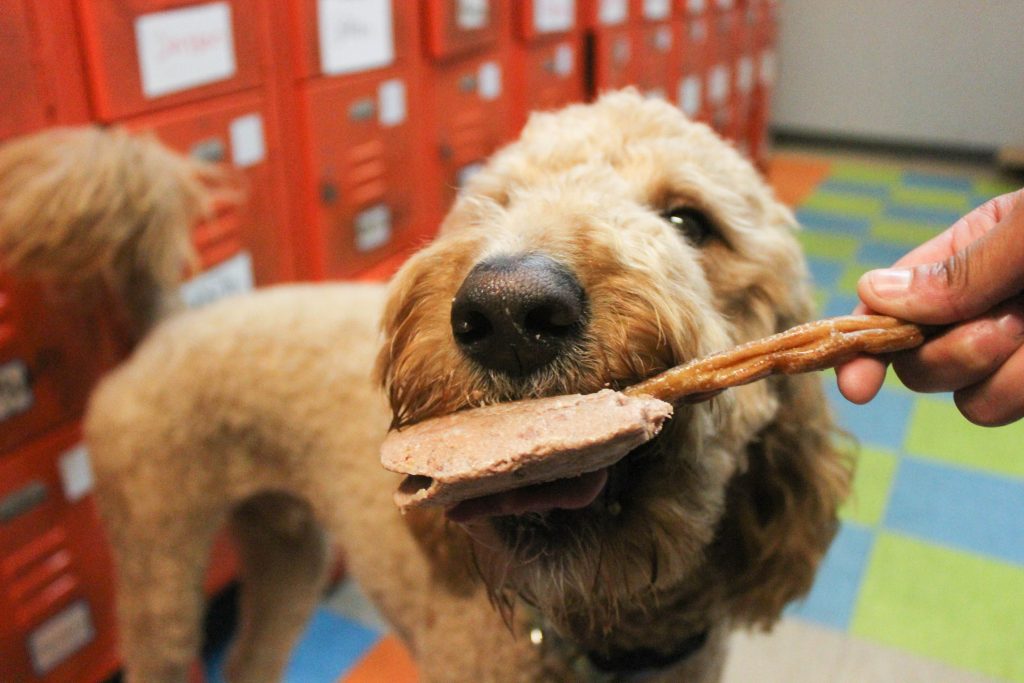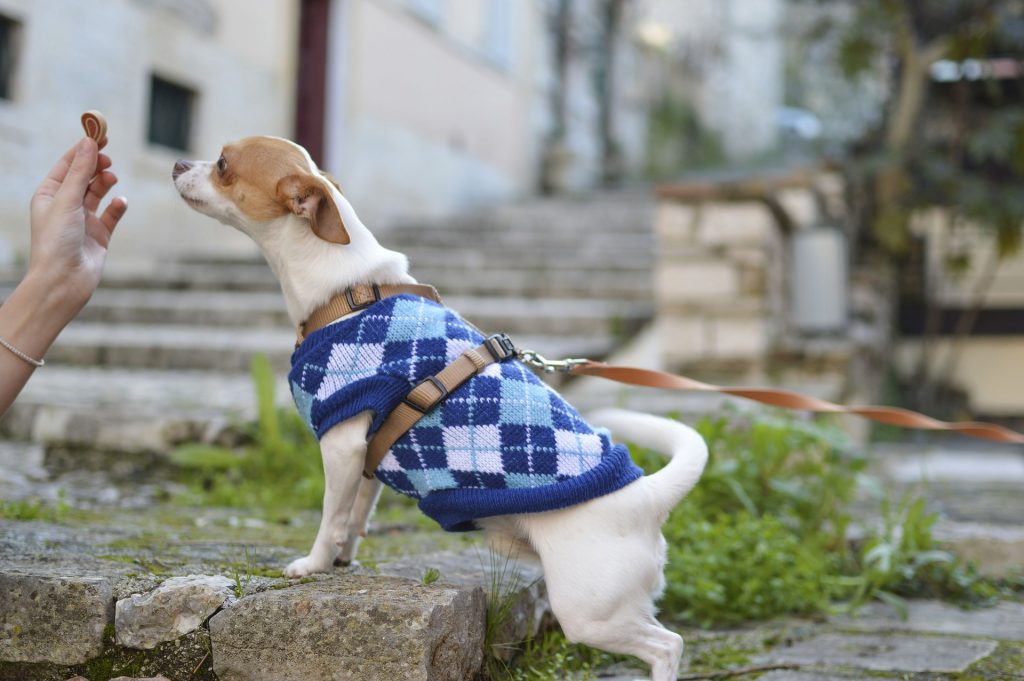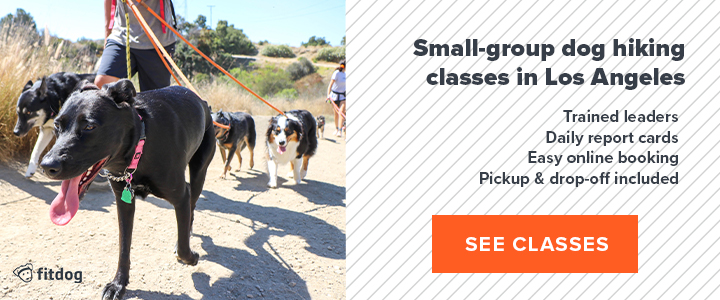Putting My Dog on a Raw Diet
Raw food diets are becoming increasingly popular, but they are no new concept. Raw diets are similar to the original doggie diet because the hounds of yesteryear hunted and ate raw meat on the regular. Dogs' bodies are made to digest decaying flesh, and they are capable of processing bacteria and germs that can easily make humans sick. But until the last decade or so, the market availability for safely prepared and packaged raw diets was slim.
When we talk aboutraw diets,it's more involved than cutting up some raw chicken and putting it in a bowl. Raw diets are supplemented with other ingredients to give dogs the nutrients they need. Companies commonly supplement raw meat with fruits and vegetables, organs, bone, vitamins, and minerals. So, we arenot saying you should feed your dog raw meat alone. Getting raw food that is already prepared is definitely the way to go.
It's also important to keep in mind that a raw dog food diet will not work for all dogs and owners. If you want to switch your dog to a raw diet, first weigh the benefits and risks, and take your dog's current condition into consideration. Your dog will let you know whether or not they enjoy the food by simply eating it or not. If your dog is a puppy, elderly, or has health concerns, consult your vet before putting your dog on a raw diet. Additionally, if you have young children, elderly persons, or anyone with a compromised immune system living in your home, vets advise against feeding your dog raw food.

How a raw diet will change your dog
The best way to determine if your pup is suited to a raw diet would be doing some research, and taking your dog's current condition into consideration. We're here to help you weigh the benefits and risks and make the right decision for you!
Digestion improves
With a raw food diet, dogs are able to absorb more of the ingredients. Therefore, dogs poop less frequently and overall produce less fecal matter. Your dog is able to go longer on less food, compared to a kibble diet.
Additionally, because dogs aren't consuming as much junk, they spend less time and energy digesting food. While kibble stays in a dog's stomach for 7-9 hours, raw food only takes 1-2 hours to digest. Less energy spent digesting food = more energy to have fun.
Healthier physique
Dogs have been known to lose excess weight or even gain needed weight on a raw diet. Depending on where they're at, a raw diet balances your dog's system and moves to a healthier weight.
More energy
It's pretty simple: upgrading to higher-quality food gives dogs more energy because there is less junk to filter out. Your dog gets the essential nutrients they need to feel their best, without carrying a load of carbs and fillers in their bodies all day.
Fitdog's co-founder, Andrea, recently put her 10-year-old Jack Russell Brecken switched to a raw diet, and immediately noticed an increase in his energy and endurance out on hikes and beach excursions.
Less satiating; more scrounging
Because raw diets minimize the need for extra ingredients, this can leave dogs feeling like they got less than they're used to. This could lead to scrounging, or in other words, looking for where the "good" treats are hidden. It's like going to the Olive Garden and getting the salad without the breadsticks: maybe you feel lighter because you just had the salad, but you're not as full or satisfied without the breadsticks.

What to look for
Always check the ingredients | As we mentioned earlier, raw food diets are supplemented with ingredients other than meat to get your dog required dietary nutrients. If you can find a food that uses real vegetables and whole foodsrather than synthetic vitamin packets, your dog will be able to absorb even more nutrients per meal. And of course, the most-abundant ingredients will always be labeled first, so you're really looking for direct protein sources to be listed first.
Avoid freezer burn |If you see freezer burn on a raw food product, it's likely past its prime. If you can help it, choose food without freezer burn for optimal quality.
Wash your hands |Dogs are capable of processing germs that humans are not. That's why it's important towash your hands thoroughlywhen handling raw food. And you shouldn't cook raw food because it will lose a lot of nutritional value. Children should also not interact with raw foods.
Signs of refreezing | If the product has time to thaw out, it will fill with oxygen. So you can tell if products have been refrozen if there's a lot of air in the bag. (The bag will look and feel like a balloon.) Avoid refrozen food because it could easily be contaminated.
Who is this diet ideal for?
Most dogs can benefit from switching to a raw food diet. But there are a few groups who canespeciallybenefit:
Seniors:Much like humans, when dogs get older, their metabolisms slow down. Raw diets have higher water content and less fat than kibble. Senior dogs also benefit from a low-glycemic and low-phosphorus diet, which usually has less bone in it. Less bone = less ash. 'Ash' is what vitamin and mineral deposits are referred to in the dog food world. Ash can easily build up in kidneys and can form stones or crystals. Kibble sometimes will have a lot of ash in it and that's bad for senior dogs. Many senior dog diets are designed with this in mind, so it's something that can help make your dog's golden years especially golden.
Picky Eaters:Raw food tends to be much more palatable than kibble. Raw meat triggers a siren in your dog's brain that goes, this feels right.And that's due to generations of dogs hunting for themselves and eating raw meat. So if your dog is picky when it comes to kibble or wet food, raw food is definitely worth trying.
Dogs with Allergies: Having a dog with allergies can make it difficult to find foods they can eat. Narrowing down whatyour dog is allergic to can be easier with a limited-ingredient diet. Most raw food diets have fewer ingredients than an average kibble formula. And because these meals are so customizable, you can usually get raw food tailored to your dog's needs.

Risks & Naysayers
While people have had success with raw diets, there are definitely risks to consider.
First, there are obvious risks such as bacteria contamination in handling raw food. A recent Listeria outbreak forced one raw food company to recall several products. Of course, cooked or processed products can also carry bacteria. Just last week, pig ear treats were recalled nationally after causing 127 cases of salmonella across 33 U.S. states.
If you give your dog raw bones, they can chip and cause serious internal damage. (Although, if you get a raw bone that is cut properly, you minimize that risk.)
But then there are things not so immediately obvious. Veterinarian Lisa M. Freeman, DVM, PhD, led a study on raw diets that was published by Journal of the American Veterinary Association in 2001. She found the long-term effects of five different raw diets resulted in nutritional deficiencies or excesses that would prove highly detrimental if given over a long time. That being said, you may not notice the negative cumulative effects of a raw food diet until much later in your dog's life.
You also have to check whether your dog's raw food diet provides sufficient balanced nutrition. Talk with your vet about any questions you have concerning your dog's health when switching to a raw food diet.

Getting Started
Now that you have all of the facts, here are some of our favorite raw food brands.
My Perfect Pet
If you want your dog to try raw food, but you're skeptical about handling raw meat, tryMy Perfect Pet.This food is lightly cooked and packaged in bricks, making it easy for you. They have a wide range of formulas for both dogs and cats. Learn more about My Perfect Pet here.
Tuckers Raw Frozen Dog Food
Tuckers vacuum seals each serving of food for optimal quality. They make it really easy: measure out how much food your dog should have based on their chart, thaw, and serve. They also have raw frozen bones and treats, if you want to really treat your pup. Learn more about Tucker's Raw Frozen Dog Food here.
Primal Pet Foods
Primal is a popular brand that makes freeze-dried and frozen patties. They even have kibble-shaped raw food, for the real kibble-lovers out there. Additionally, Primal has starter packs for dogs and cats that feature different flavors, so you can see if your dog likes it before committing to an entire bag. Learn more about Primal Pet Foods here.
Stella & Chewy's
Stella & Chewy's have made a raw protein kibble, that has raw nutrition sprinkled on baked kibble. If you want to try raw food, but can't get down with serving your dog raw meat, try this mix. Having a kibble / raw nutrition blend can be really beneficial for highly active dogs who burn more calories than the average dog per day. Learn more about Stella & Chewy's here.
We wish you the best of luck transitioning your dog to a raw food diet. Leave us a comment telling us about your experience feeding your dog a raw diet!
Updated from original post on 8/5/2019
Source: https://www.fitdog.com/blog/raw-diets/

0 Response to "Putting My Dog on a Raw Diet"
Post a Comment